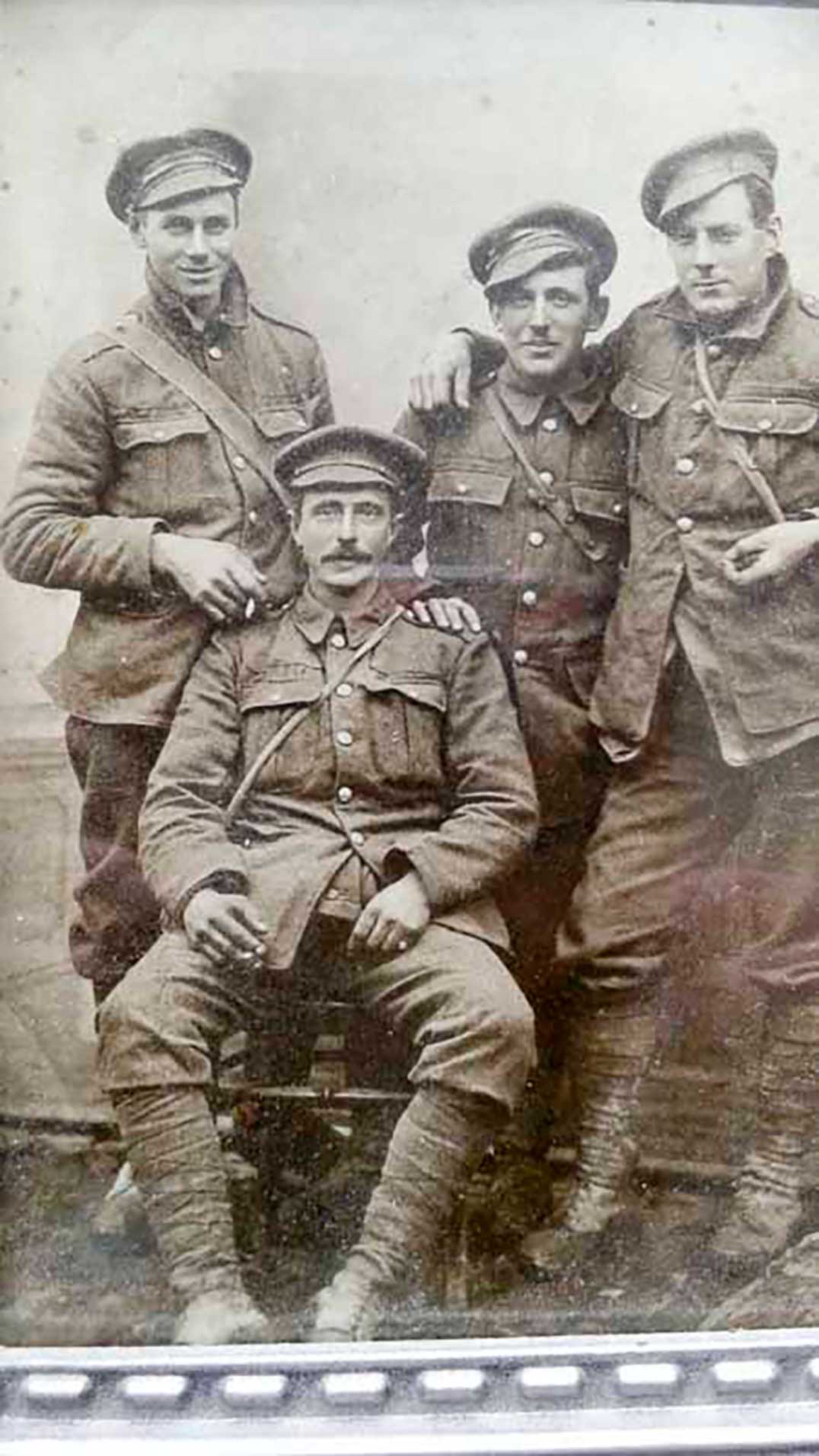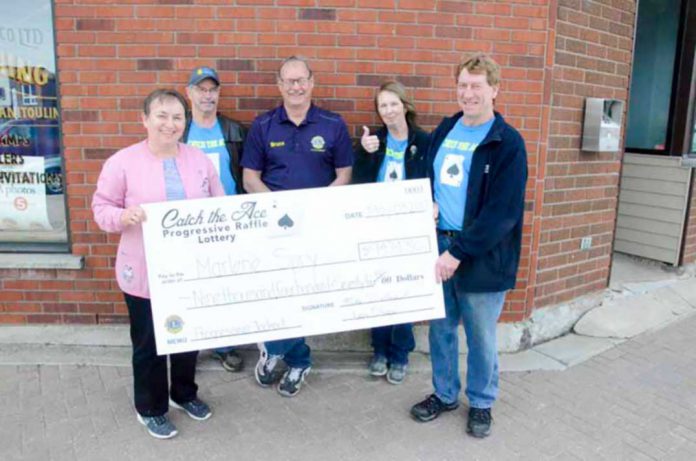GORE BAY—For Valerie Flanagan of Gore Bay, visiting the La Chaudiere Military Cemetery in France as part of a trip to Vimy Ridge in April was deeply emotional. Being able to view the cemetery of her grandfather Sid Cox was the culmination of a life long journey for her.
“My dad would have been nine-years-old when my grandfather died,” Ms. Flanagan told the Recorder last week. “Both my father and mother never really talked about my grandfather.”
She explained that when she reached her grandfather’s grave, “yes it was an emotional experience. We didn’t know if we would be able to get that close to the cemetery because security was so high with the Vimy Ridge ceremony (April 9). But we visited the cemetery on the Saturday (April 8) in the late afternoon.”
Ms. Flanagan is originally from Mindemoya and her parents were Arthur and Winnie Love. “I went on this trip with Merit Travel on its 100th Vimy excursion. I went with Jean Brown as well as Ruth and Craig Pettis, who I have been friends with for a long time.”

“I had always wanted to go to Vimy Ridge and visit my grandfather’s grave,” stated Ms. Flanagan. She said the friends that she travelled with on this trip had all “had gone on a trip for the 75th anniversary liberation of Holland in so they knew Ted Barris who led the trip (for Merit Travel). Ted is so knowledgeable and makes history very interesting. He had told my friends he would be putting a trip together for the Vimy Ridge 100th and when they told me about it I said I would like to go as well.”
“Mr. Barris went out of his way to accommodate us and for me to be able to see my grandfather’s grave,” continued Ms. Flanagan. “Ted is from Uxbridge and there were 55 of us on the bus trip to the cemetery.”
Mr. Barris and his website ‘Barris Beat’ and the original article published in the Uxbridge Cosmos, has allowed the Recorder to use information from his article for this story. He reported in April, “we arrived in the late afternoon. Shadows from an encircling grove of trees cast eerie slivers of light and dark across the manicured cemetery grounds—the grass cropped short, the flowers freshly tended. I watched one of my fellow travellers, Valerie Flanagan, move from one line of tombstones to the next. Our walk through La Chaudiere Military Cemetery just below the famous Vimy Ridge a few days ago was the culmination of a long journey for her. Then, she saw it, her grandfather’s grave.
“I’m so glad I made it here,” she said. “I didn’t know how I’d feel.”
The story of Private Sidney Cox of the 46th Battalion of the Canadian infantry rings familiar for so many families affected by the Great War,” wrote Mr. Barris. “But his wasn’t written in a history book. It was written in Valerie Flanagan’s face. It told of a man born in England in 1885, of his marriage and of his beginning to raise four children. Prospects seemed greater in Canada, so Cox answered a call to work in the wheat fields of Saskatchewan in hopes he could later bring his family along behind him. The Great War intervened. He joined the 46th Battalion in Moose Jaw, Saskatchewan and was shipped back to England before embarkation to the Western Front in August, 1916.”
“He maybe saw his young family twice,” Ms. Flanagan said.
During active service Cox’s battalion served at the battles of the Somme, Ancre Heights and Vimy Ridge. So decimated was the 46th, losses in the ranks of nearly 92 percent, that this regiment became known as the “suicide battalion,” wrote Mr. Barris. As the frontline forces of the Canadian Expeditionary Force captured the first trenches atop Vimy Ridge, Cox brought forward supplies of gas canisters and other supplies behind the lines. But he didn’t savour the victory at Vimy long; Cox was felled by a sniper on May 5, 1917. He was just 31.”
“‘It has always been my dream to visit his grave,’ Valerie Flanagan wrote me months ago,” said Mr. Barris, “‘to honour him and my grandmother’.”
Ms. Flanagan told the Recorder, “on our visit there was a 94-year-old Second War War veteran who came with us on the tour. His daughter pushed him in a wheelchair. We went to the World War I museum and the Juno Beach museum, “when we heard a big commotion on the other side of the hall. The veteran was pointing at a photograph and saying that’s me, he was a carrier in the Second World War.”
One of the many things that Mrs. Flanagan saw on the trip that had a deep meaning for her was “when you see all those cemeteries. There are thousands of graves. The graves are so well maintained, with flowers around each of them It is simply amazing to see.”
“It was a wonderful trip,” added Mrs. Flanagan.





